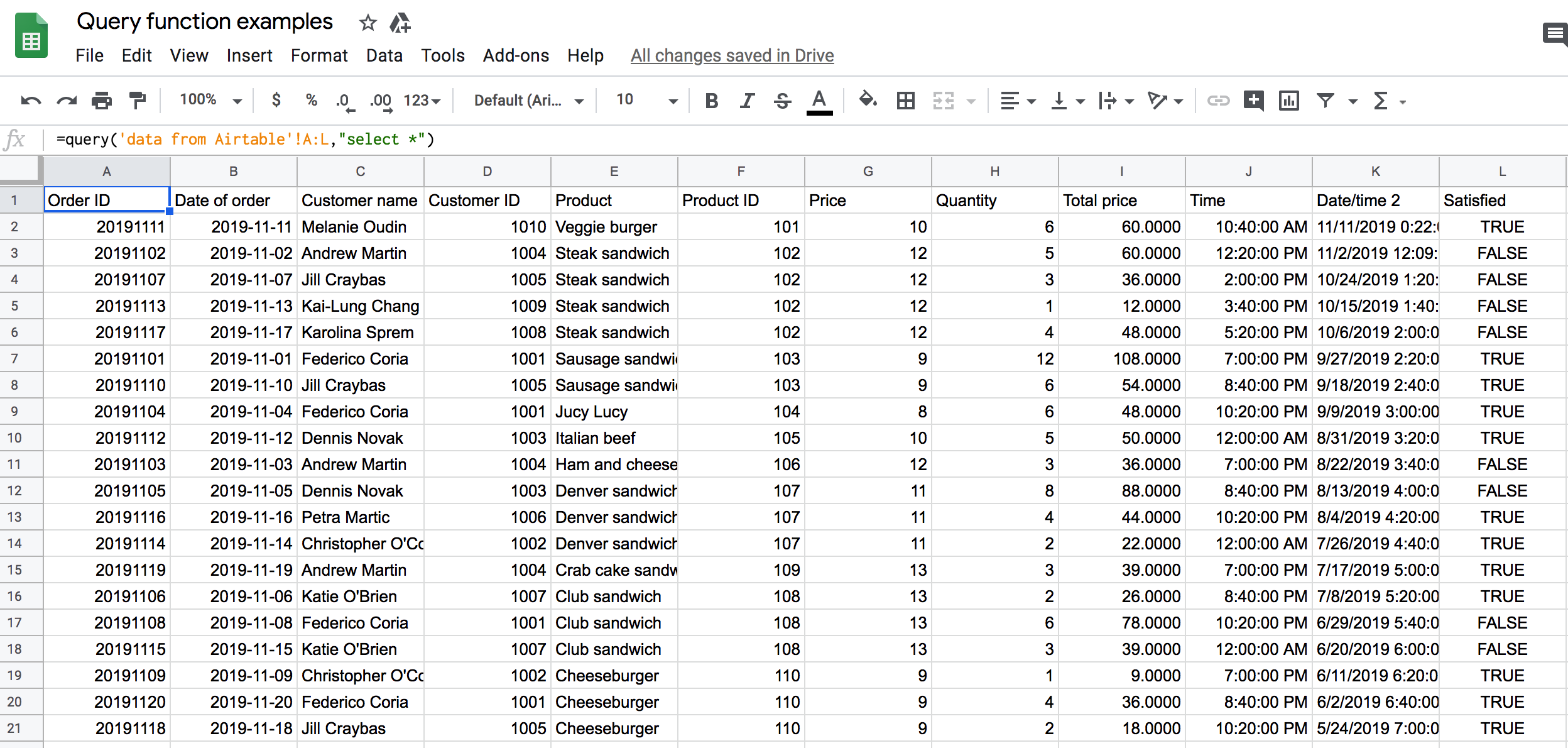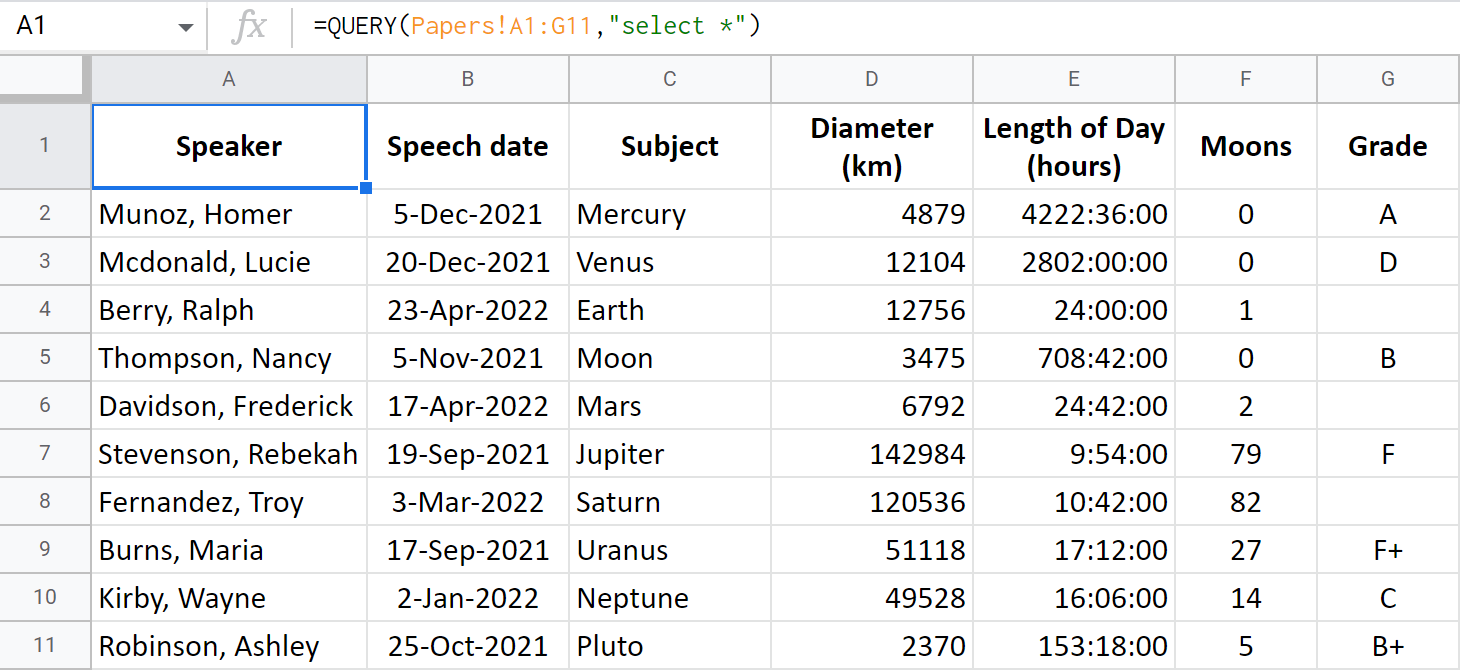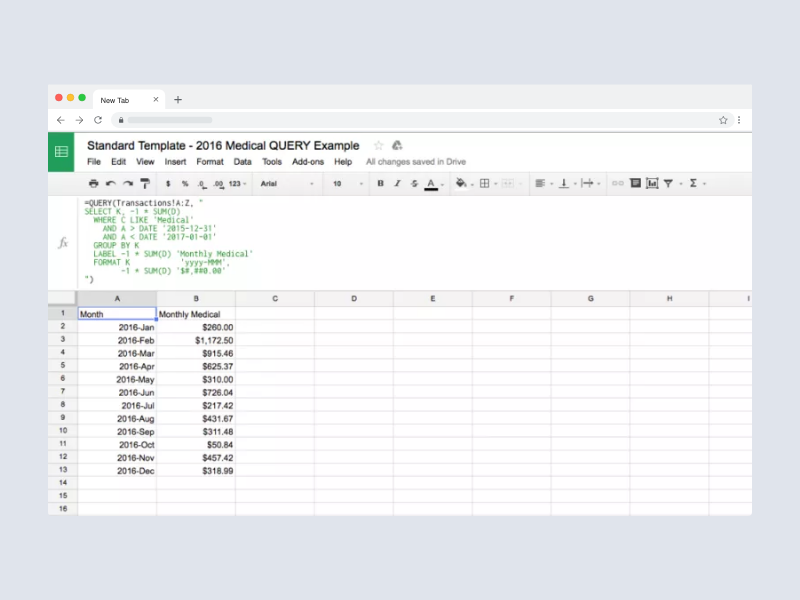Google Sheets Query Return Headers - When using sum (or any other aggregation function), query automatically creates a header row specifying the aggregation performed, e.g. Returns rows that match the specified condition using select and where clauses. Query can accept either col notation or a, b notation. It is possible to modify the headers returned by the query function using label. Modifying the headers is particularly interesting when an.
Returns rows that match the specified condition using select and where clauses. When using sum (or any other aggregation function), query automatically creates a header row specifying the aggregation performed, e.g. It is possible to modify the headers returned by the query function using label. Modifying the headers is particularly interesting when an. Query can accept either col notation or a, b notation.
Returns rows that match the specified condition using select and where clauses. Modifying the headers is particularly interesting when an. Query can accept either col notation or a, b notation. It is possible to modify the headers returned by the query function using label. When using sum (or any other aggregation function), query automatically creates a header row specifying the aggregation performed, e.g.
How To Insert A Header In Google Sheets SpreadCheaters
When using sum (or any other aggregation function), query automatically creates a header row specifying the aggregation performed, e.g. Query can accept either col notation or a, b notation. Modifying the headers is particularly interesting when an. It is possible to modify the headers returned by the query function using label. Returns rows that match the specified condition using select.
Google Sheets QUERY Function Tutorial 2023 Coupler.io Blog
Modifying the headers is particularly interesting when an. When using sum (or any other aggregation function), query automatically creates a header row specifying the aggregation performed, e.g. It is possible to modify the headers returned by the query function using label. Returns rows that match the specified condition using select and where clauses. Query can accept either col notation or.
How to Use Google Sheet Query in GoogleSheet, How Does It Work? by
Modifying the headers is particularly interesting when an. It is possible to modify the headers returned by the query function using label. When using sum (or any other aggregation function), query automatically creates a header row specifying the aggregation performed, e.g. Returns rows that match the specified condition using select and where clauses. Query can accept either col notation or.
Google Sheets Query How to Remove Header from Results
When using sum (or any other aggregation function), query automatically creates a header row specifying the aggregation performed, e.g. Modifying the headers is particularly interesting when an. It is possible to modify the headers returned by the query function using label. Query can accept either col notation or a, b notation. Returns rows that match the specified condition using select.
Google Sheets Query Honest Guide with Formulas and Examples Coupler
It is possible to modify the headers returned by the query function using label. Modifying the headers is particularly interesting when an. Query can accept either col notation or a, b notation. Returns rows that match the specified condition using select and where clauses. When using sum (or any other aggregation function), query automatically creates a header row specifying the.
How to use Google Sheets QUERY function standard clauses and an
Modifying the headers is particularly interesting when an. Returns rows that match the specified condition using select and where clauses. It is possible to modify the headers returned by the query function using label. When using sum (or any other aggregation function), query automatically creates a header row specifying the aggregation performed, e.g. Query can accept either col notation or.
How to Return Unique Rows in Google Sheets QUERY
Query can accept either col notation or a, b notation. Modifying the headers is particularly interesting when an. It is possible to modify the headers returned by the query function using label. Returns rows that match the specified condition using select and where clauses. When using sum (or any other aggregation function), query automatically creates a header row specifying the.
How to use Google Sheets QUERY function standard clauses and an
Returns rows that match the specified condition using select and where clauses. Modifying the headers is particularly interesting when an. It is possible to modify the headers returned by the query function using label. Query can accept either col notation or a, b notation. When using sum (or any other aggregation function), query automatically creates a header row specifying the.
How To Use Google Sheets QUERY Function
Returns rows that match the specified condition using select and where clauses. When using sum (or any other aggregation function), query automatically creates a header row specifying the aggregation performed, e.g. It is possible to modify the headers returned by the query function using label. Modifying the headers is particularly interesting when an. Query can accept either col notation or.
Google Sheets QUERY Function Tutorial 2025 Coupler.io Blog
Modifying the headers is particularly interesting when an. Returns rows that match the specified condition using select and where clauses. Query can accept either col notation or a, b notation. When using sum (or any other aggregation function), query automatically creates a header row specifying the aggregation performed, e.g. It is possible to modify the headers returned by the query.
Modifying The Headers Is Particularly Interesting When An.
Returns rows that match the specified condition using select and where clauses. It is possible to modify the headers returned by the query function using label. When using sum (or any other aggregation function), query automatically creates a header row specifying the aggregation performed, e.g. Query can accept either col notation or a, b notation.









